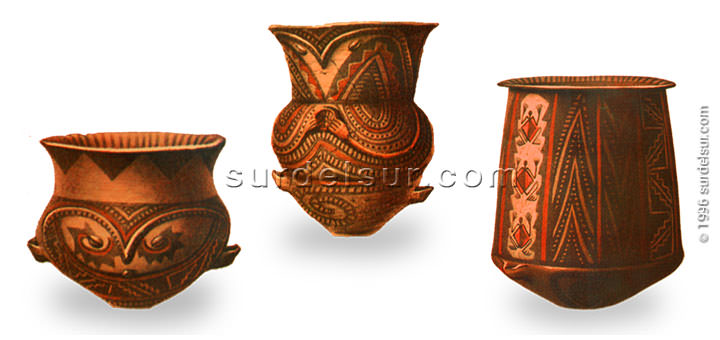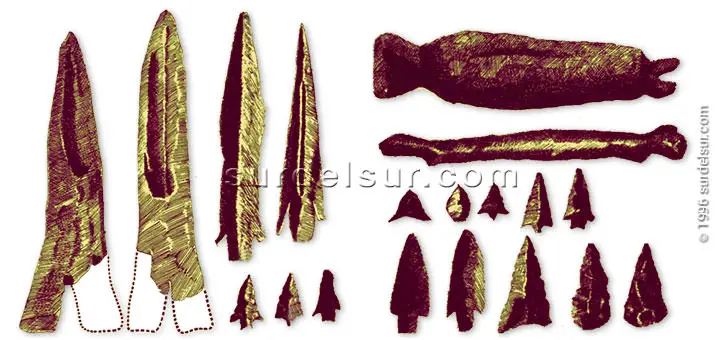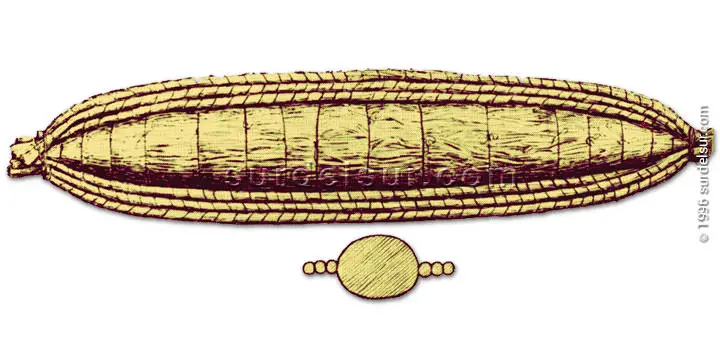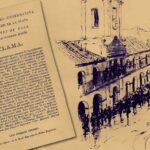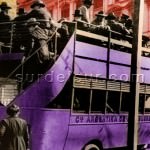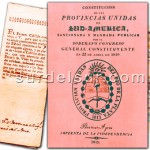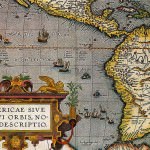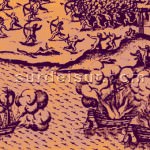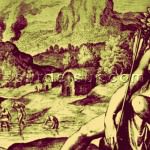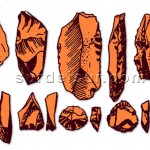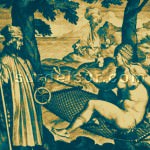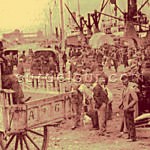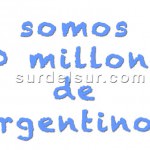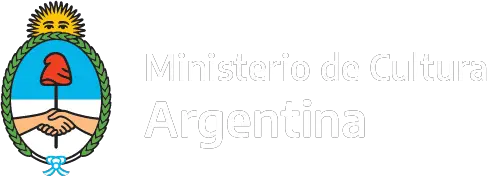The indigenous people in Argentina were essentially nomadic and generally lived by hunting, fishing and gathering. In the 16th century, the confrontation with the Spanish conqueror curtailed their chances of cultural development. Nevertheless, in spite of this blow, they managed to survive in time and history. Today they constitute an important segment of the Argentine population.
To synthesize the complex picture of the different cultural groups of indigenous peoples can be divided according to their habitat, indigenous peoples of the Northwest, Central Sierras, Cuyo, Pampas, Patagonia, Neuquén, Chaco, Litoral and Mesopotamia.
Northwest Indigenous Peoples
The Diaguita culture was the most complex and numerous of aboriginal populations.
Was part of the Diaguita people, the Pulares, Luracatao, Chicoanas, Tolombones, Yocaviles, Quilmes, Tafis, Hualfines among others. These indigenous peoples shared the Cacá or Cacán language, social organization and worldview was similar. The Diaguita culture represented 75% of the indigenous peoples of Argentina to the arrival of the conquistadors.
About 200,000 natives compounded this people when the Spaniards arrived. They were sedentary. They engaged in farming, building canals in order to water their corn, pumpkin and kidney bean crops. They were breeders of llamas cattle, and used their wool for their fabrics. They collected, carob and chañar. They were known for its pottery and metalwork. They adored Sun, thunder and lightning. They had similar leaderships to the caciques’ chieftancy and their families were monogamous. From 1480 they were under the dominion Inca.
Indigenous Peoples of Sierras
In the area of central sierras, the Comechingones and the Sanavirones had settled down.
The Comechingones belonged to the West of Córdoba Province and The Conlara Valley in San Luis Province. The Sanavirones inhabited North of Córdoba Province.
They lived by hunting, gathering and fishing; they grew corn, kidney beans and pumpkin, besides the llamas cattle grazing. They adored the Sun and the Moon. The extended family was the core of the community. A group of families was a partiality headed by a cacique, probably hereditary charge. Palisades of logs were used to surround the houses. These were large, probably to house several families.
Indigenous Peoples of Cuyo Region
The culture of Huarpes occupied the present provinces of San Juan, San Luis and Mendoza. The Allentiac and Millcayac were the main subgroups. The houses were made of stone in the mountain area, while in the plains were built with thatch. They worshiped the sun, the moon and the morning star.
The Huarpes were sedentary peoples, dedicated to agriculture, and grew corn and squash. They collected carob, with which prepared the Patay and chicha or aloja. They also hunted guanacos, vizcachas and nandus; using bows and arrows; and boleadoras. (A weapon made with ropes and stones). They practiced fishing in Guanacache lagoon, now almost dried. Fishing was practiced using canoes made of reeds, or rush, tied tightly. The boats were elongated with raised edges and were driven with a stick. Several copies of the same were found. In the Guanacache lagoon, also hunted ducks.
Indigenous Peoples of Pampa and Patagonia Region
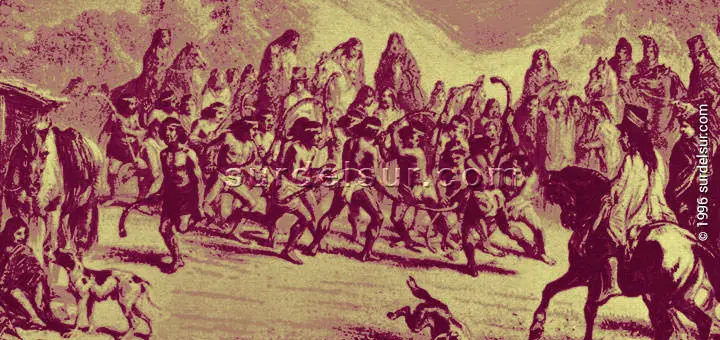
In the Pampa and Patagonia inhabit many communities, with three main branches.
The first group was made up of the old Pampas also called Querandíes, inhabitants of La Pampa and Buenos Aires, which were later supplanted by the Araucanians coming from Chile.
The second community was that of the Guenaken or Tehuelches, who occupied the north of the Patagonia region.
And the third group consisted of the Patagones or Chonecas, which were located in the South Patagonia, and the Onas, which inhabited Tierra del Fuego. The different indigenous groups inhabitants of this area had common features. They hunted hares, foxes, nandus and also fished, especially Onas. They lived in extended families joined composing groups of one hundred individuals led by a chief.
Indigenous Peoples of Neuquén Region
The Pehuenche culture was settled down in Neuquén, living by hunting and gathering and they were grouped in bands made up by families and they believed in a supreme being who dwelt beyond the sea.
Indigenous Peoples of Chaco Region
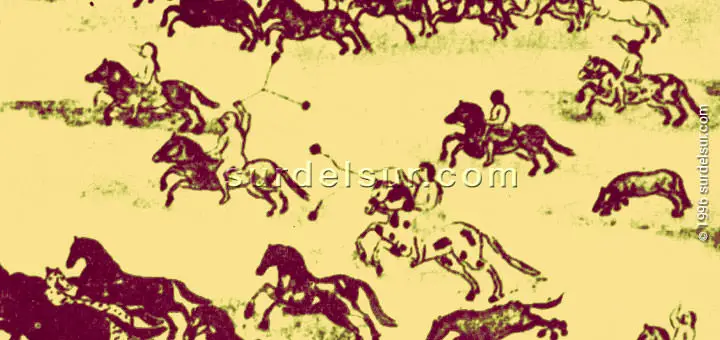
Tobas, Mocovíes and Abipones inhabited the region of Chaco, Formosa, north of Santa Fé, northeast of Santiago del Estero and east of Salta.
Total of culture, given the generic name of a subgroup, are called Guaycurúes. They are Patagonian origin, burly of great stature and perfect teeth. They wore moccasins and fur cloak the use of Patagones.
The Abipones, that were later extinguished, had settled in the North coast of down Bermejo River.
Tobas y Pilagaes occupied part of Formosa. The Mocovíes lived in the boundaries of antic Tucumán.
The Guaycurúes people where influenced by the usage and customs of surrounding communities, and later on from the Spaniards. But they strongly fight for there independence from the conquerors. In the early 16th century they adopt the usage of horses, brought by the Spaniards, and they fought actively against Spanish domination, assaulting Concepción del Bermejo City and rural establishment.
They were basically hunters and collectors of wild fruits, widely spread in their habitat. There were joined in groups, led by a cacique. The families were monogamous, with the exception of the chefs that had aloud to by polygamous. They believed in a supreme entity, creator of the world. Other great cultural groups of this region were the Mataco-Mataguayo, Chiriguanos and Chané.
Indigenous Peoples of Littoral and Mesopotamian Region
The Guarani culture prevailed in this area. They were sedentary and farming people. They cultivated their land for a couple of years, when the land is exhausted, the village moved elsewhere. They who lived in large houses accommodating several families. They believed in a lost paradise where they would return some day, guided by a Chaman or Mesias. The Chaná-Timbú, Caingang and Charruas inhabited the same region.
References:
All graphic material in this report is edited digitally. The customized version by surdelsur.com shown on this page is performed based on the following documents:
- Bry, Theodor de (Engraver, Belgian), (1528–1598). América [Engraving].
- Indigenous vesels [Pottery]. Argentine North . Museo de la Plata. (La Plata Museum)
- Serrano, Antonio (Archeologist, Argentine). (1899-1982). Arrowheads. Stone tools [Drawing]. Comenchingones Culture. San Roque Dock . Córdoba Province .
- Métraux, Alfred (Anthropologist, Swiss). (1902-1963). Rush Canoes. Guanacache Lagoon. [Drawing]. Huarpes Culture . Object of Museo de Historia Natural, (Natural History Museum). San Rafael, Mendoza, Argentina.
- Lehnert, Pierre Frédéric (Fine Arts artist, French). (1811-?). Araucanos playing Chueca.[Drawing, detail]
- Paucke, Florián (Jesuit Missionary). (1719-1779). Mocovíes driving horses [Drawing, detail].

